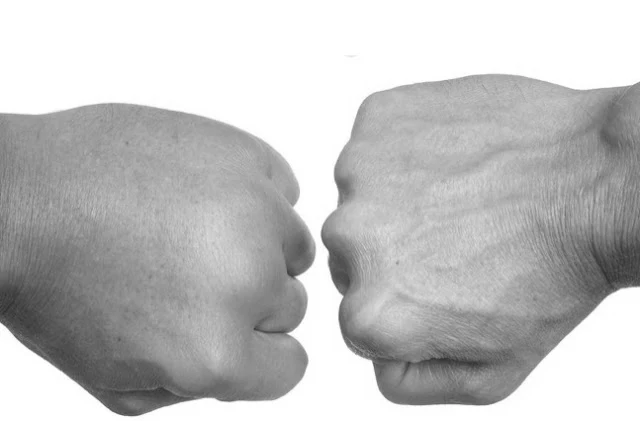When you apply pressure to the swollen area and this causes an indentation in the skin, this is called pitting edema.
Read also:
1. Difference between Pitting Edema and Non-Pitting Edema
2. Neuropathy: Types, Symptoms and Causes
3. Neuropathy-Diagnosis and Treatment Methods
4. Cerebral Edema (Brain Swelling) - Types, Symptoms, Causes and Treatment
When the swollen area is pressed with a finger and this does not cause an indentation, it is called non-pitting edema.
 |
| Normal hand (left) and hand with edema (right) |
Pitting and Non-Pitting Edema
This was a topic that I found very difficult to comprehend even though the concept behind
it was straightforward. It is customary to mention edema in the general examination
and if it is present, examiners can take the viva to any system quite easily.
The differential
diagnosis of both pitting and non-pitting edema was difficult to remember.
Later, when I understood the mechanism, it became easy. I will here explain in
simple words the mechanism of both types of edemas.
When fluid
flows through the vessel, a small amount of it reaches the extra-vascular space
and this fluid is drained back into the venous system by the lymphatic vessels.
Also, it is important to mention that along with fluid, some proteins also leak
out into third space.
This is the
normal process happening in our bodies. The amount of fluid reaching the
interstitial space depends on the hydrostatic pressure and oncotic pressure
present inside the blood vessels.
Hydrostatic
pressure forces the fluid to go out and oncotic fluid pulls fluid into the
blood vessel.
Generally,
hydrostatic pressure exceeds oncotic pressure and a little amount of
intravascular fluids reach the interstitial compartment.
In
normal condition, lymphatics can drain back both the fluid and proteins
reaching the third space.
Fluid
accumulates more due to various causes which, in one way or the other involve
renal (ex. Nephrotic syndrome, due to loss of proteins through urine thereby
decreasing the oncotic pressure), hepatic (liver produces albumin and in case
of chronic liver injury, hypoalbuminemia can occur which will eventually result
in decreased oncotic pressure) or cardiovascular system (ex.
Congestive
heart failure where the heart is unable to pump the blood leading to fluid
accumulation thereby causing increased hydrostatic pressure).
When this
fluid accumulation exceeds the capacity of lymphatics, edema appears. But the
protein leak is not totally dependent on hydrostatic pressure and oncotic
pressure. It is dependent on the size and charge of the proteins. So the pressure
changes won’t cause more protein accumulation.
We get
pitting edema in this case, because the tissues filled with fluid yield easily
on pressing.
When there
is lymphatic obstruction due to any cause (filariasis, malignancy), the
drainage of both fluid, as well as proteins back to the venous system, is
affected.
Now more and
more fluid and proteins accumulate in the interstitial space leading to edema.
In this
case, the swelling won’t yield on pressing because of the increased protein
content. So we call it a non-pitting type of edema.
This type of
edema can also be seen after lymphatic dissection which done as a part of
onco-surgeries. When lymphatics are removed to curb the spread of the
malignancy, similar complication can happen.
So, by
differentiating edema into these two kinds, we can rule out or rule in some
diseases.
Cardiovascular,
renal and hepatic causes usually present as pitting edema. So, the take-home message is that lymphatic obstruction causes a non-pitting type of edema
whereas hydrostatic and oncotic pressure changes cause pitting edema.
Myxedema
It is due to
increased level of TSH – Thyroid Stimulating Hormone (ex. In hypothyroidism) in
the body which will stimulate Fibroblasts, resulting in increased deposition of
glycosaminoglycans and mucopolysaccharides. This will lead to a swollen
appearance of the tissue. It is usually a non-pitting type of edema. It can be
seen in Graves’ disease also.
Medical
students need to know these concepts to perform well in the exam as examiners
frequently ask these questions.
Article by:
Sarath R S
You can read
my MBBS experience by clicking on the links.
Read also:
1. Difference between Pitting Edema and Non-Pitting Edema
2. Neuropathy: Types, Symptoms and Causes
3. Neuropathy-Diagnosis and Treatment Methods
4. Cerebral Edema (Brain Swelling) - Types, Symptoms, Causes and Treatment
